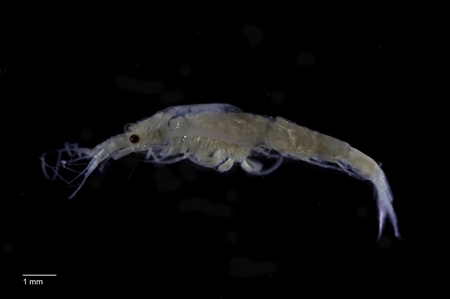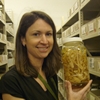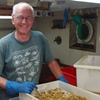General Description
Rostrum triangular, acute. Stalked eyes, carapace covering the head and most of the thorax. Antenna 2 apical suture absent. Antenna 2 scale lateral margins without setae. Uropod exopod slender setae absent on lateral margin. Abdomen long, ending in a tail fan bearing pair of statocysts. Lateral edge of telson armed with spines. Up to 1.5 cm long.
Biology
Opossum shrimps are so-called because they carry their eggs and young in a marsupium-like pouch. The young which hatch from it are miniatures of the adults. The legs are more adapted for swimming than walking and each has two branches. The tail fan has a pair of statocysts, cavities containing a floating particle and acting as a balancing organ in much the way the cochlea does in the human ear.
Habitat
Shallow water and seagrass beds, to depths of 12 m.
Seagrass meadows
Coastal shores
Distribution guide
Southern temperate oceans, including south-eastern Australia.
Species Group
Prawns, shrimps, lobsters › Mysids
Depth
Shore (0-1 m)
Shallow (1-30 m)
Water Column
Max Size
15 mm
Diet
Plankton or Particles
Commercial Species
No
Global Dispersal
Native to Australia
Species Code
MoV 1013
Conservation Status
- DSE Advisory List : Not listed
- EPBC Act 1999 : Not listed
- IUCN Red List : Not listed





